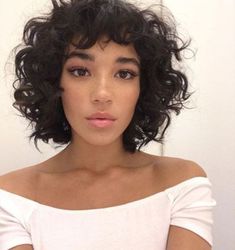
https://i.pinimg.com/236x/1e/fa/9c/1efa9cf7b07b95e592a8aba82eeefeeb.jpg
If you’ve tried oils on your curls, but didn’t love it, it might be because you’re using oils the wrong way. Oils are sometimes suggested as being a fix-all for curly hair, or a one-size-fits-all solution, but that isn’t the case. There are two different ways to use oils: for sealing or moisturizing. Give this guide a read through so you’ll know when you need a moisturizing oil or a sealing oil.
What’s a moisturizing oil?
Moisturizing oils do just that; they help reintroduce moisture into dry curls. These oils work to penetrate into your curl’s shaft, and provide an intensive moisturizing treatment. They work best in tandem with a water-based leave-in conditioning treatment, so don’t forget to utilize one if you aren’t already. They also are very useful for oiling your scalp, which makes them an effective treatment for dry scalp, especially if you’re prone to dandruff. Examples of moisturizing oils include olive oil, (try to go for virgin or organic when possible), coconut oil, and avocado oil.
What’s a sealing oil?
Unlike a moisturizing oil, a sealing oil doesn’t introduce moisture into your strands. Rather, it seals or locks existing moisture into your strands. Therefore, it doesn’t penetrate into the shaft like the above mentioned moisturizing oils do, and instead lies on top of the shaft. However, it does create great shine and luster on curls, making it a great choice for those who are prone to frizz, dryness, or dull curls. It works really well when used with protective styles to help keep moisture inside your strands. Apply oil after you’ve applied your moisturizer and after placing strands into the protective style. Examples of a good sealing oil include castor oil (also great for scalp massages and encouraging healthy growth), grapeseed oil, and jojoba oil. These oils can be a bit heavy so if you have lighter strands, you’ll want to go easier with these.
